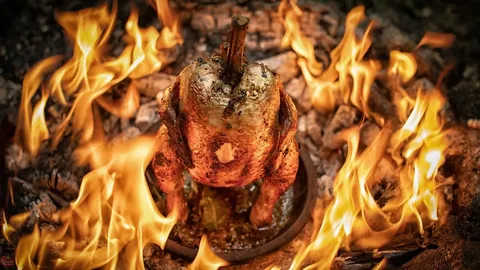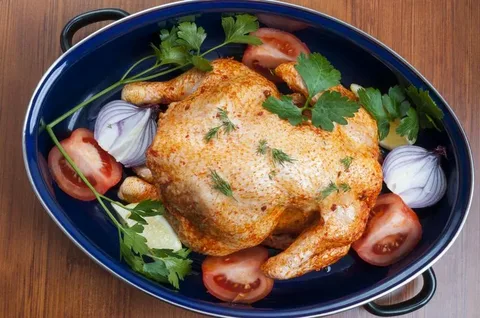Introduction
Roasting vegetables is akin to exposing a hidden side of these humble garden staples. The heat transforms them, drawing out natural sugars and caramelizing edges to create a depth of flavor that might make you reconsider your main dish. Roasted vegetables pack a punch of flavor and texture, with crispy exteriors and tender interiors. But how do you achieve that divine roast? Let’s explore the steps to elevate your vegetable roasting game.
Choosing the Right Vegetables

Best Vegetables for Roasting
When it comes to roasting, not all vegetables are created equal. Root vegetables like carrots, potatoes, and parsnips develop a sweet, nutty flavor when roasted. Broccoli, Brussels sprouts, and bell peppers offer a vibrant color contrast and an earthy taste. Zucchini and squash become tender and juicy, perfect for adding a touch of freshness to the mix.
Seasonal Vegetables to Consider
Seasonally fresh vegetables not only taste better but they also retain more nutrients. In the fall, think butternut squash and sweet potatoes. Winter might see you roasting hearty Brussels sprouts or beets. Asparagus and artichokes come into play in spring, while summers are perfect for tomatoes and eggplants.

Preparation Techniques for Roasting
Cutting and Sizing Vegetables
Consistency is the name of the game that most people realize when it comes to preparing food. In case what is being used is of different sizes, it will not be cooked evenly. This can result in overcooked foods next to raw unduly combined and represented pieces, which alters the textural and palatability of the food. To avoid this occurrence it becomes very important to ensure that the size of the cuts is consistent.
Necessary for such activities as chopping vegetables, slicing meat, or even slicing of fruits it is correct to ensure that all cuttings are of equal sizes so that they can cook evenly. For example, when toasting vegetables they must be chopped to a certain uniform size to brown continually and become tender on all sides. Also during baking, equal portions of the food don’t have to be overdone while the others are under such as meat when searing.
Uniformity in size also works as an advantage when it comes to presenting your plate. Reading: What Plates Tell about Culture Properly portioned and chopped foods arranged on a plate appear better presented and highly professional. Not only do you make the cooking process much smoother to go through, but your final meal is going to look good on the plate and taste exceptional as well. I want to remind you here that even cuts lead to even cooking.
Prepping for Flavor
Marinating isn’t just for meat. Toss your veggies in olive oil, sprinkle some salt, and let them soak in flavors like balsamic vinegar, rosemary, or garlic for at least 15 minutes. This step is simple yet essential for an enriched flavor profile.

The Perfect Roasting Process
Ideal Oven Temperature
High heat is where the magic happens. Preheat your oven to about 400°F (200°C). This temperature ensures that your vegetables are cooked through while achieving that delightful crispy exterior. If you’re roasting denser vegetables like potatoes, consider going a bit higher to 425°F (220°C).
Timing for Different Vegetables
Timing is crucial. While most veggies like bell peppers and zucchini only need about 20-25 minutes, root vegetables may require up to 45 minutes. Check them halfway through and give them a toss to ensure even cooking.
Using the Right Cookware
Opt for a large, rimmed baking sheet. Overcrowding will steam vegetables rather than roast them. They need space to let the heat circulate, so if you’re making a large batch, consider using two sheets.

Tips for Achieving Perfectly Roasted Vegetables
Checking for Doneness
You’re aiming for a golden-brown finish and a fork-tender interior. Check your veggies by poking a fork through the center. If it slides through effortlessly, you’re there.
Experimenting with Seasonings
Spice things up! Try combinations like cumin and coriander for a Moroccan twist or rosemary and thyme for an Italian flair. Don’t be shy with your spice rack.
Storing Leftover Roasted Vegetables
Sweet treats are very delicious and economical as you get to use your foods for the next few days, but you need to ensure that the leftovers are stored well. If you want to keep your cooked meals looking fresh and appetizing, you should store them in an airtight container in the refrigerator. This method assists in retaining moisture and flavor while at the same time excluding smells that one does not want to mix with others. Your leftovers can be stored in the fridge for up to 4 days safe from spoilage.
To reheat the cookies, you need to place the cookies in a pre-warmed oven for about fifteen minutes at 350 degrees Fahrenheit to get the crispy texture that they may have lost when refrigerated. If you have a creative bend of mind, then try tossing your leftovers into a fresh salad making them a part of your salad, or adding your leftovers to pasta making them a part of your spaghetti sauce. This also has a preventive measure against food wastage, and it also presents a different meal from the one had the previous evening.
Conclusion
Roasting vegetables should be a staple in every kitchen. With the right selection and preparation, you can bring out flavors in your veggies you didn’t think possible. So, grab your favorites, throw them in the oven, and experience the magic. Get roasting, and get ready to impress both your palate and your dinner guests!